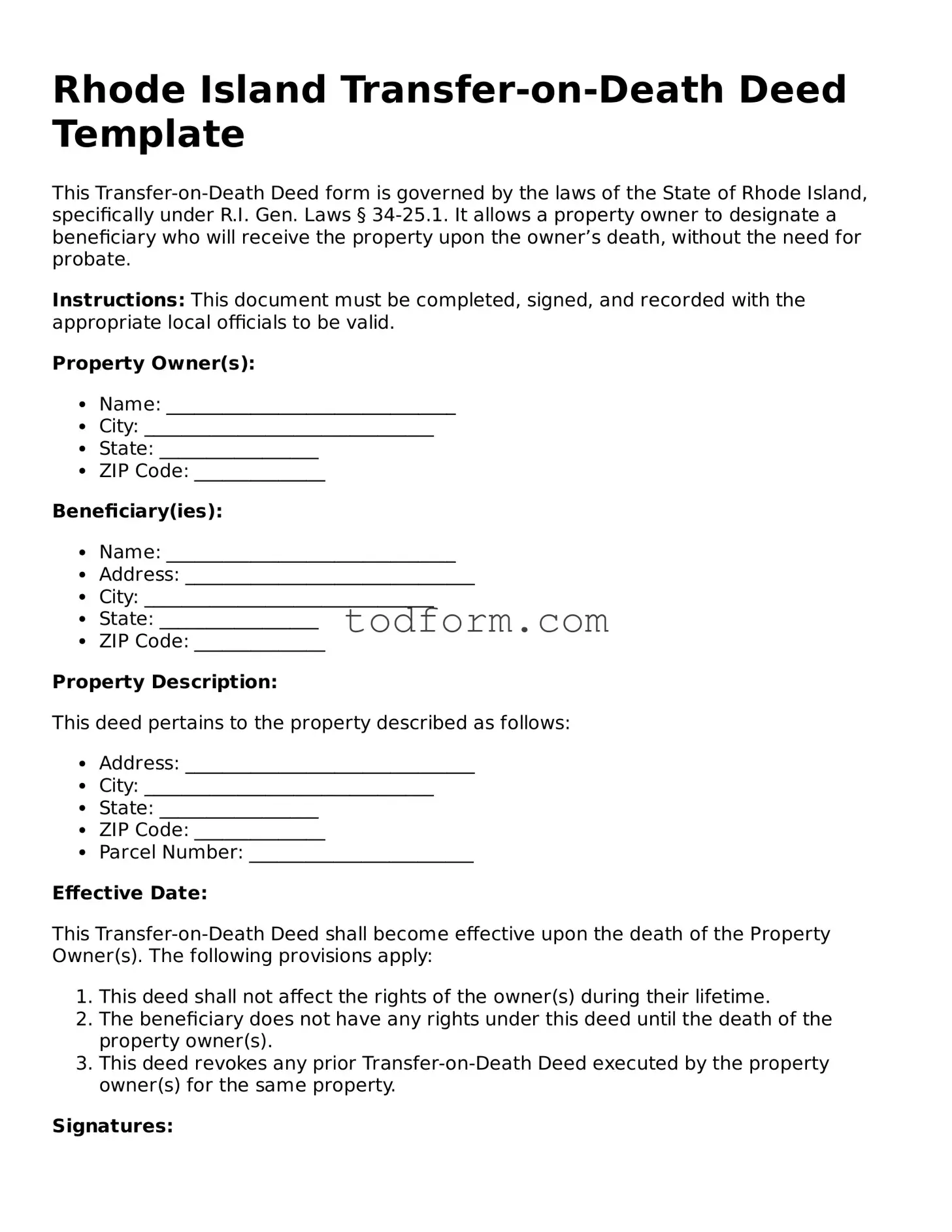Similar forms
The Rhode Island Transfer-on-Death Deed (TOD) form shares similarities with a Last Will and Testament. Both documents serve the purpose of transferring property upon the death of the owner. However, a key distinction lies in the timing of the transfer. A Last Will and Testament takes effect only after the individual’s death and requires probate, a court process that validates the will. In contrast, the TOD deed allows for an automatic transfer of property without the need for probate, simplifying the process for heirs and expediting the transfer of assets. This feature makes the TOD deed an attractive option for individuals seeking to streamline the distribution of their estate.
Another document comparable to the TOD deed is the Revocable Living Trust. Like the TOD deed, a Revocable Living Trust facilitates the transfer of assets upon the grantor’s death. The trust holds the property during the grantor’s lifetime and allows for management by a designated trustee. Upon the grantor’s death, the assets within the trust are distributed to beneficiaries without going through probate. This parallel emphasizes the intention behind both documents: to ensure that property is transferred efficiently and according to the owner’s wishes. However, setting up a trust often involves more complexity and cost compared to executing a simple TOD deed.
The TOD deed also resembles a Beneficiary Designation form, commonly used for financial accounts like life insurance policies or retirement accounts. Both documents allow property owners to designate specific individuals to receive their assets directly upon death, bypassing probate. In the case of a Beneficiary Designation, the transfer is limited to financial accounts, while the TOD deed applies specifically to real property. This similarity underscores a shared goal: ensuring that assets are transferred smoothly to designated beneficiaries without unnecessary delays or legal complications.
Finally, the TOD deed can be likened to a Joint Tenancy with Right of Survivorship agreement. This legal arrangement allows two or more individuals to own property together, with the stipulation that upon the death of one owner, the surviving owner(s) automatically inherit the deceased's share. Like the TOD deed, this arrangement avoids probate and facilitates a seamless transfer of ownership. However, joint tenancy typically requires co-ownership during the lifetime of the individuals involved, whereas a TOD deed allows for a single owner to designate beneficiaries without sharing ownership during their lifetime. This flexibility makes the TOD deed a unique and practical choice for many property owners.
